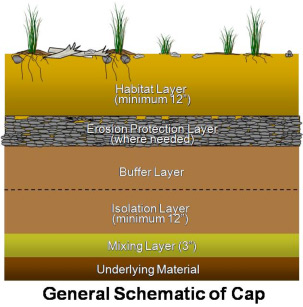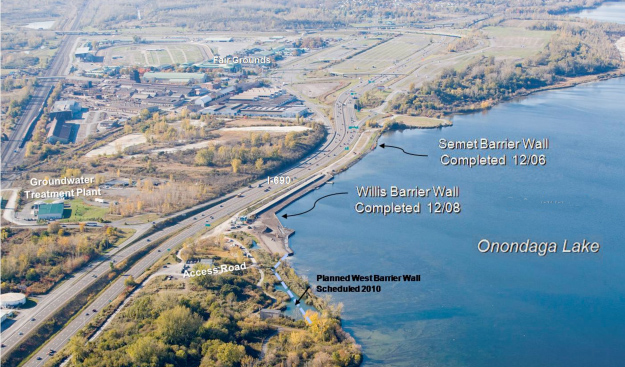Diverse and Sustainable Habitat Enhancements at Forefront of Capping and Dredging Plans
The New York State Department of Environmental Conservation (DEC) today released the third of four major designs for the restoration of Onondaga Lake. The lake remediation plan, which was issued by the DEC and the U.S. Environmental Protection Agency, calls for a combination of dredging and capping—proven environmental cleanup methods that are designed to provide long-lasting protection of health and the environment.
Developed by a team of more than 100 local engineers and scientists working with nationally-recognized experts, the design outlines areas to be dredged, the depth of dredging, the components of the cap, and where capping will occur. The design is based on 200,000 analyses of more than 10,000 samples taken from more than 800 locations in the lake.
The capping will isolate material in the lake and will be monitored to ensure it performs as intended. Capping is a proven technology and has been implemented at numerous remediation sites across the country.
The cap supports goals for habitat restoration:
- maintaining or improving the quality and diversity of habitat in the lake;
- discouraging the establishment of invasive species; and
- promoting public access and use.
To ensure long-term isolation of material in the lake and protection of the environment, the cap will include several layers:
- habitat layer to enhance conditions for fish;
- erosion protection layer against wind/wave energy and ice;
- buffer layer for enhanced protection;
- isolation layer of clean sand to separate the underlying materials from the environment; and
- mixing layer of sand.
A major component of the remedy is dredging contaminated lake-bottom materials. The lake remedy outlined in the 2005 Record of Decision called for dredging up to an estimated 2.65 million cubic yards of material, but subsequent sampling and evaluations, plus the capture of contaminated material behind a portion of the barrier wall within the lake, resulted in a more accurate estimate of about 2.17 million cubic yards. The placement of the barrier wall within the lake also protected underground utilities and provided for the stability of I-690.
Honeywell will use renewable energy sources, rely on locally produced or sourced materials, and preserve resources and energy to minimize the carbon footprint of the remediation.
The DEC fact sheet on the capping and dredging designs, as well as other information on the lake cleanup, is available online atwww.dec.ny.gov/chemical/37558.html.
Anyone interested in more information should contact Honeywell at 315-552-9784.
For more information on the Onondaga Lake cleanup, visit www.onondaga-lake-initiatives.com.







